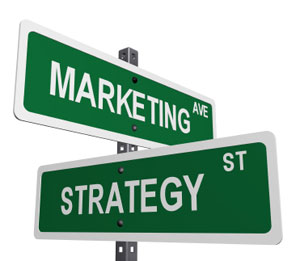This article may seem somewhat out of place on a Web site that designs, builds, and ships trade show displays. However, if one is familiar with the former relationship between the United States and Cuba, prior to Fidel Castro, then one would understand that Havana could have been a major venue for trade shows events and tourism.
Prior to Fidel Castro, Americans (and American dollars) were once welcome in this island nation. In 1962, the United States established an embargo and prohibited business dealings by Americans and American companies with Cuba. With the fall of communism in the 90s, Castro's failing health, and a changing political view from the United States,
Cuba may once again become friendly to U. S. economic interests, including tourism and marketing. Additionally, due to the large and wealthy Cuban-American community in the U. S., the flow of money and goods to rebuild this nation is almost certain to come from within the United States once the embargo is lifted. If this occurs, shipping to Cuba from the United States, as well as shipping from Cuba to the United States, is almost certain to awaken an industry that has been dormant for more than 45 years.
A Brief History of Cuban-American Relations in the 20th Century
Cuba is a large island nation located 90 miles south of Key West Florida. Havana, with a population approaching three million people, is considered the largest city in the Caribbean region. Established in 1515, it is also one of the oldest cities in the Western Hemisphere founded by Europeans. By the 19th century, Havana was known as the Paris of the Antilles.
At the end of the 19th century, Havana witnessed the final moments of Spanish colonialism in America, which ended definitively when the United States warship Maine was sunk in its port, giving the United States the pretext to invade the island nation. This conflict gave birth to Teddy Roosevelt's Rough Riders and was the location of his famous charge up San Juan Hill.
The 20th century began with Havana, and therefore Cuba, under occupation by the United States. In 1906, the Bank of Nova Scotia opened its first branch in Havana. By 1931, it had three branches in Havana.
Under American influence, the city grew and prospered. Numerous luxury hotels, casinos, and nightclubs were constructed in the 1930s to serve Havana's burgeoning tourist industry. At that time, Havana became an exotic capital of gambling and corruption where gangsters and celebrities were known to mix socially. A gallery of black and white portraits from the era still adorns the walls of the bar of the National Hotel. They include photos of Frank Sinatra, Ava Gardner, Marlene Dietrich, and Gary Cooper. In 1958, about 300,000 American tourists visited the city. One of the most famous was the American author, Ernest Hemingway.
After the revolution of 1959, efforts were made to improve social services, public housing, and official buildings. Nevertheless, shortages that affected Cuba following Castro's nationalization of all private property and businesses on the island hit Havana especially hard. Today, much of the city is crumbling without sufficient resources to preserve the old buildings from the effects of the tropical climate, government abandonment, and occasional hurricanes. Following a severe economic downturn after the collapse of the Soviet Union and the loss of vast amounts of Soviet money, the government has increasingly turned to tourism for financial support. Most of this new tourism comes from Canada and Europe. A major effort has gone into rebuilding Old Havana for tourist purposes.
US Embargo
The United States' embargo against Cuba is an economic, commercial, and financial embargo imposed on Cuba on February 7, 1962. It was codified in 1992 with the stated purpose of bringing democracy to the Cuban people and is entitled "The Cuban Democracy Act." Some scholars believe the reason for the embargo was revealed in a declassified 1964 State Department document that declares Fidel Castro to be an intolerable threat because he "represents a successful defiance of the United States, a negation of our whole hemispheric policy of almost a century and a half."
The Monroe Doctrine declared that no challenge to U. S. dominance would be tolerated in the hemisphere. In 1996, Congress passed the Helms-Burton Act, which further restricted United States citizens from doing business in or with Cuba, and mandated restrictions on giving public or private assistance to any successor regime in Havana unless and until certain claims against the Cuban government are met.
In 1999, U. S. President Bill Clinton expanded the trade embargo by ending the practice of foreign subsidiaries of U.S. companies trading with Cuba in dollar amounts totaling more than $700 million a year. As of 2007, the embargo, which prohibits American businesses from trading or conducting business with Cuban interests, is still in effect, making it one of the few times in history that United States citizens have been restricted from doing business abroad.
There is a movement in the United States Congress to lift these restrictions based on the argument they have not accomplished their stated goal of bringing democracy to Cuba and may have contributed to strengthening the Cuban government. Food has been rationed in Cuba since 1962. However, exports of food and related materials from the U.S to Cuba were valued at $3.4 billion in 2006.
Strategizing Around the United States Embargo
According to Euromonitor.com, Cuba estimates that it is losing a minimum of an estimated $7 billion per year from prospective American tourists because of the U. S. embargo. However, Cuba is increasingly vocal about wanting to open the doors to trade, which may well slowly pry open the tourism door as well. Cuban government officials publicly state that all visitors, no matter what their country of origin, are welcome in Cuba. Cuba's current economic strategy appears to be tempting foreign corporations with investment opportunities so enticing, that they increasingly lobby the U.S. to amend or dismiss the Helms-Burton Act. As an illustration, Cuba issued an open invitation to corporations interested in drilling for oil off their coast (neighbor Trinidad has done well thanks to such reserves). The question remains if power players really pass up tourism development opportunities without a fight. It seems doubtful. In the meantime, the island still enjoys over two million visitors per year from over 44 nations.
On July 31, 2006, Fidel Castro, made his last public appearance before ceding temporary power to his brother, Raul. This was the first time he has ceded power since taking over the nation during the 1959 revolution. While his health condition is being kept secret, it is speculated that he suffers from terminal cancer.
Hopefully, the stand-off that began a generation ago will end. When this happens, the United States will be in a prime geographical position to once again contribute to the economy of our neighbor as well as reap the benefits that Cuba has to offer.
Sources: Wikipedia.org, Reuters, Euromonitor.com
Updates:
- Mexico-Cuba Packages Could Open U.S. Travel to the Island (3/23/2011 Travel Market Report)
- Atlanta airport gets approval for Cuba charter flights (3/8/2011 AJC.com)
- U.S., Cuba Seek To Normalize Relations (12/17/2014 HuffingtonPost)
Author

Marc Mousseau
Marc Mousseau is President of Moose Logistics, a full-service trade show marketing company based in Atlanta, Georgia. His company provides pop-up displays, custom trade show exhibits, rental exhibits, creative services, and freight and logistical services to clients around the world. Marc is also available for speaking and consulting engagements related to this topic and trade show marketing in general.



